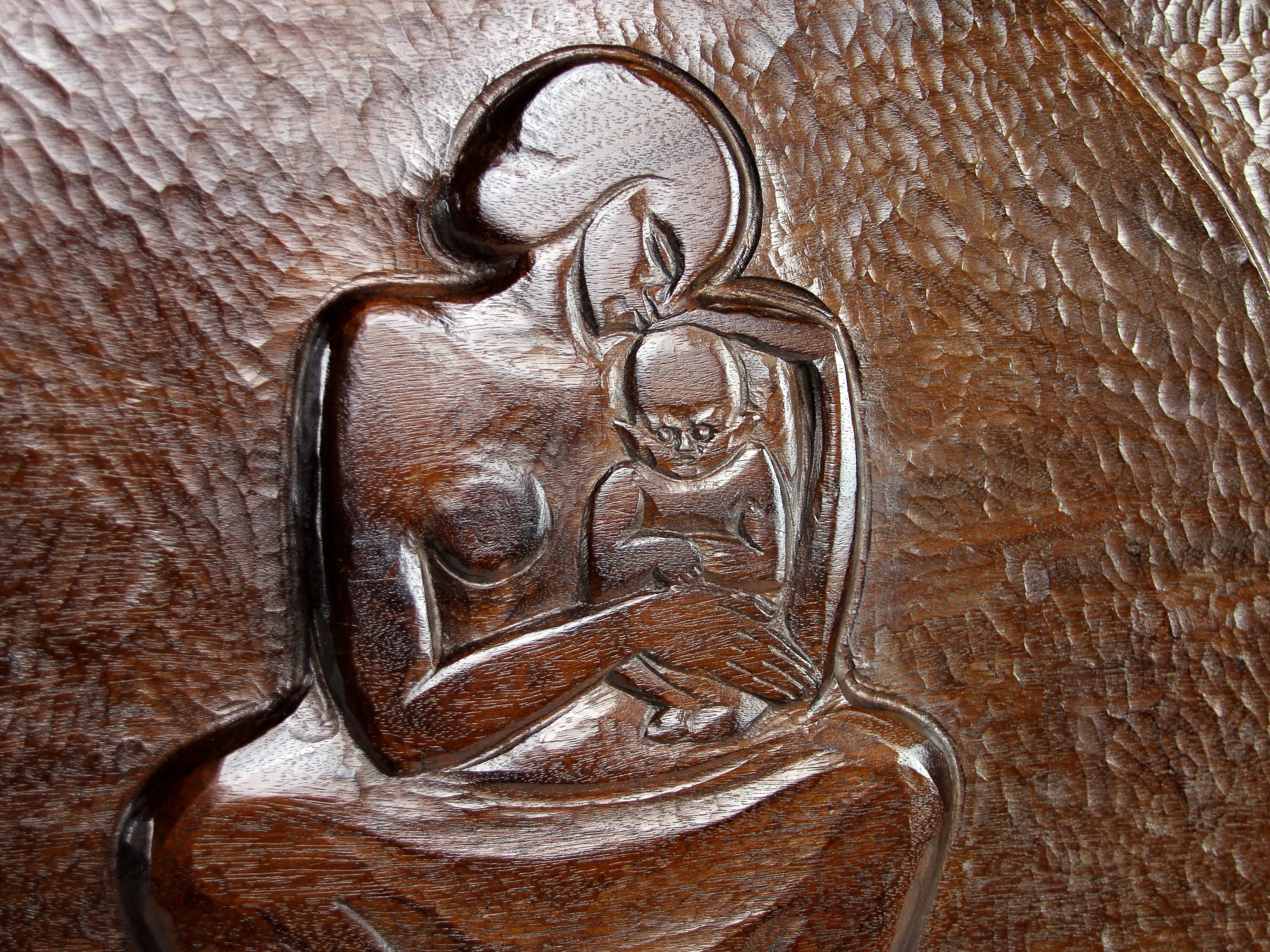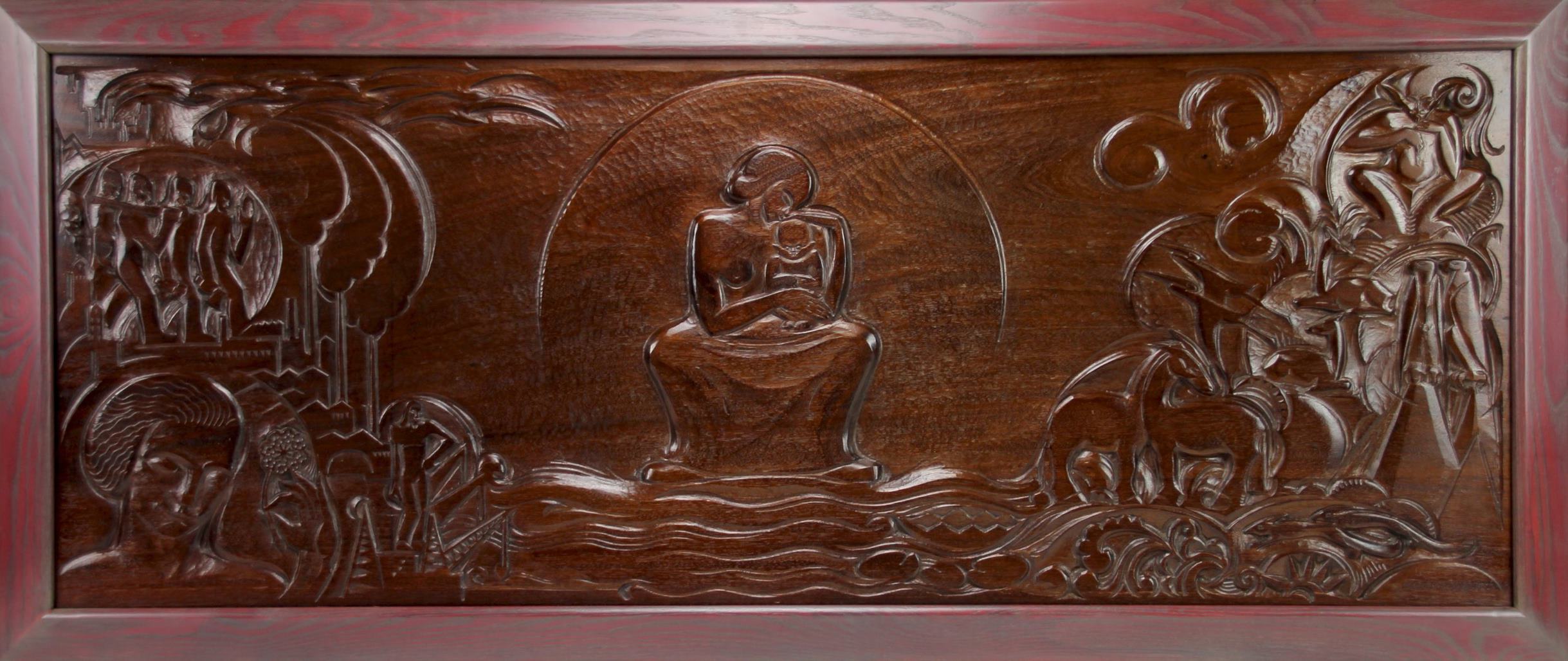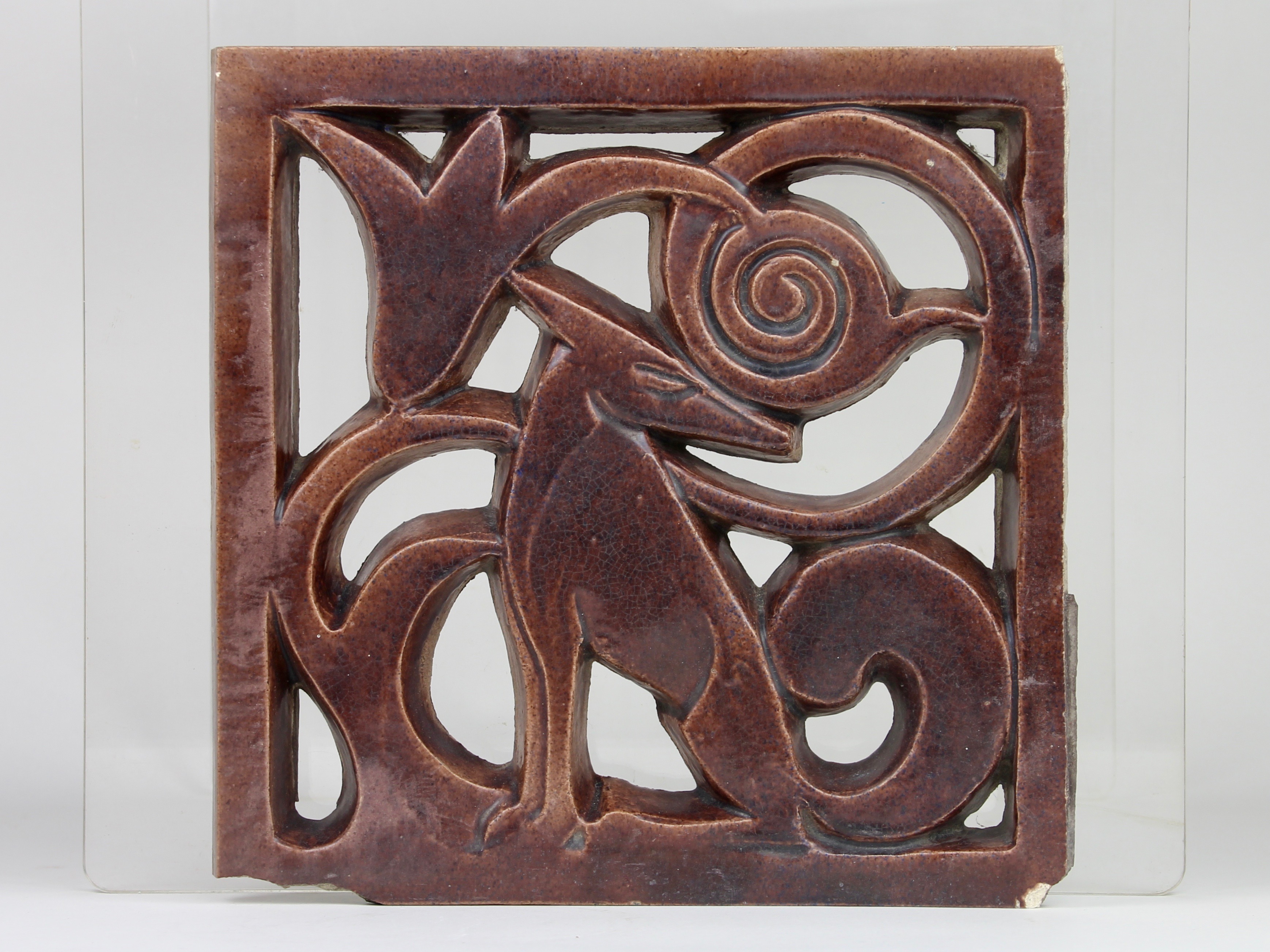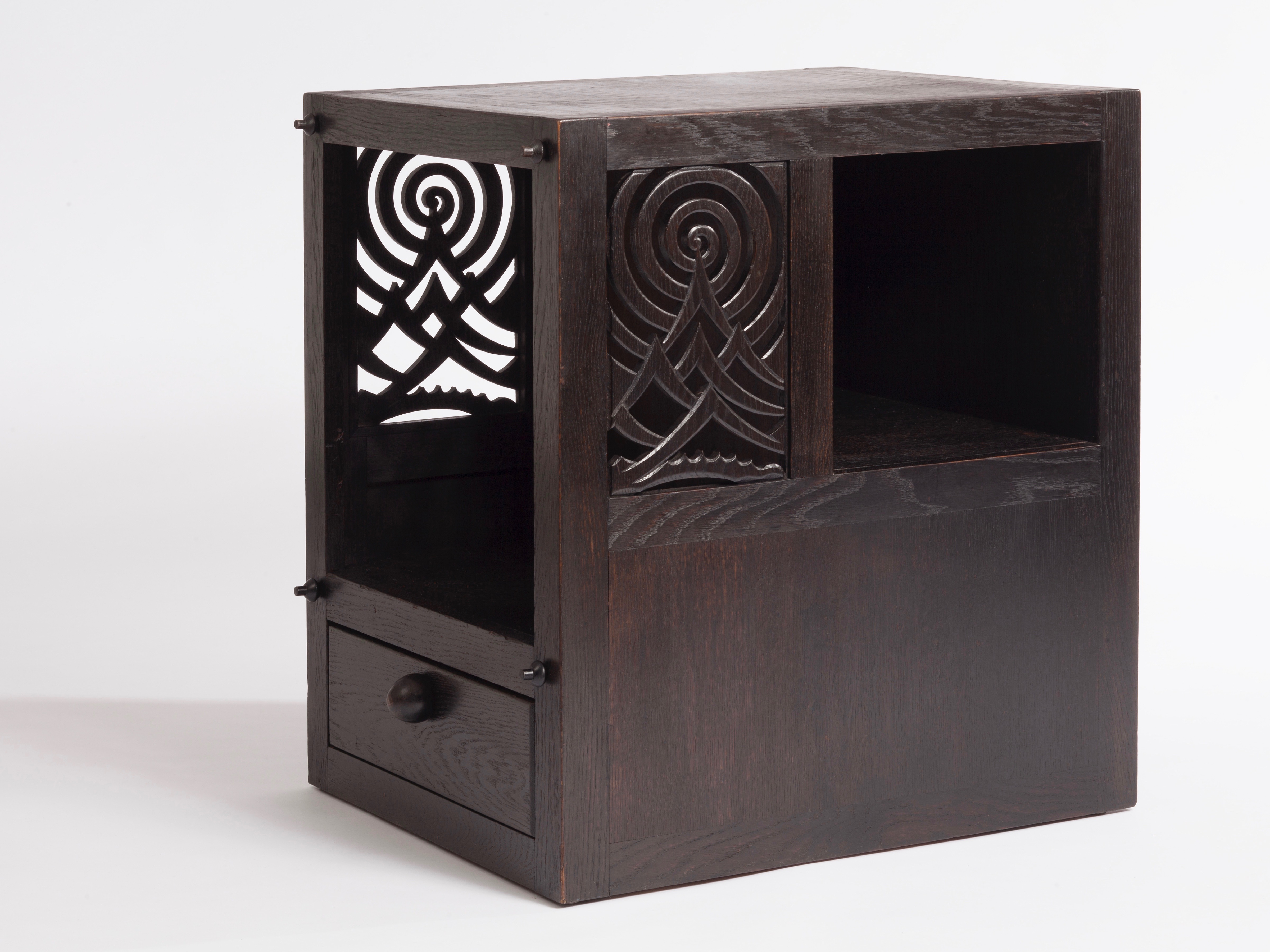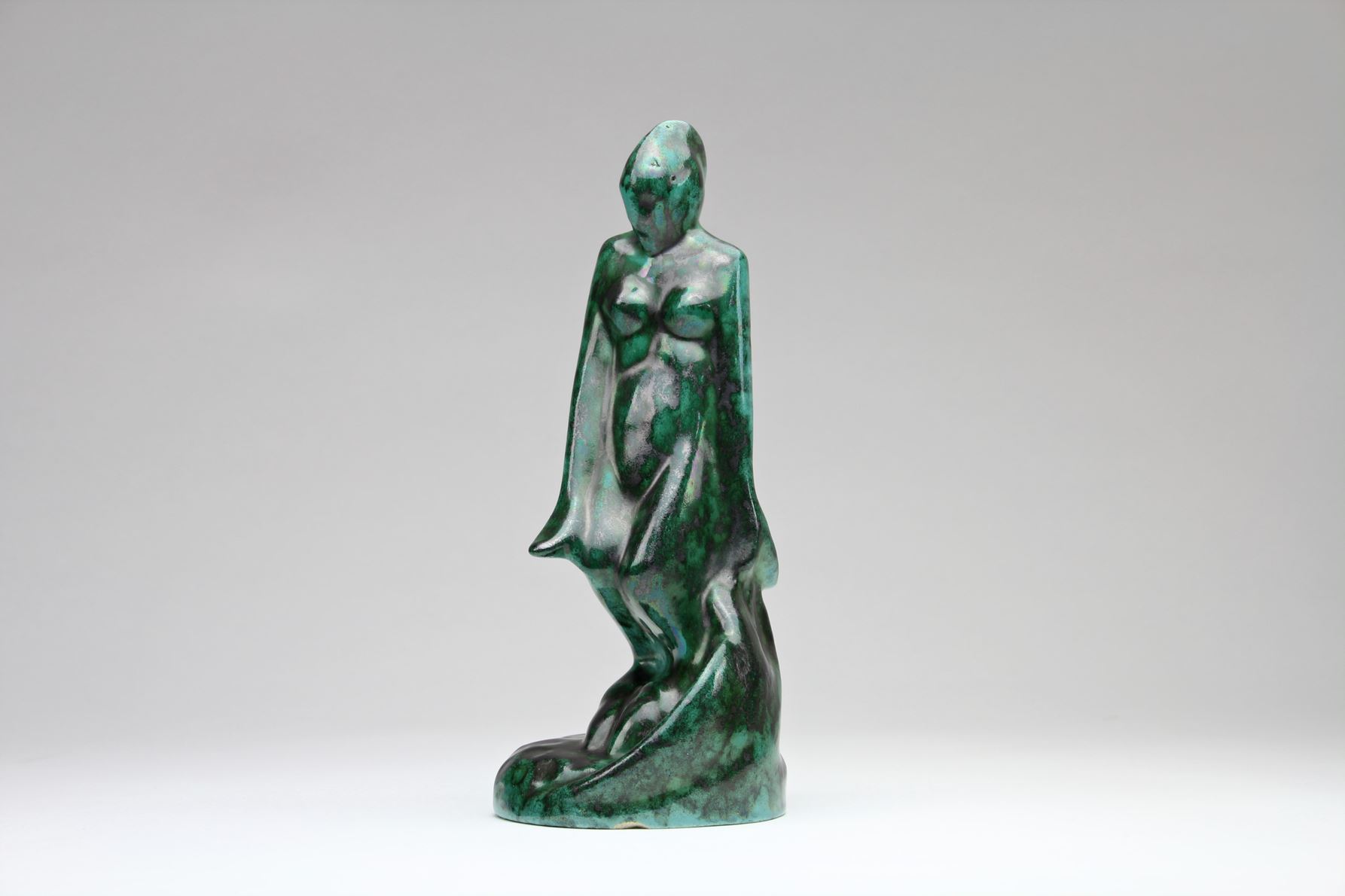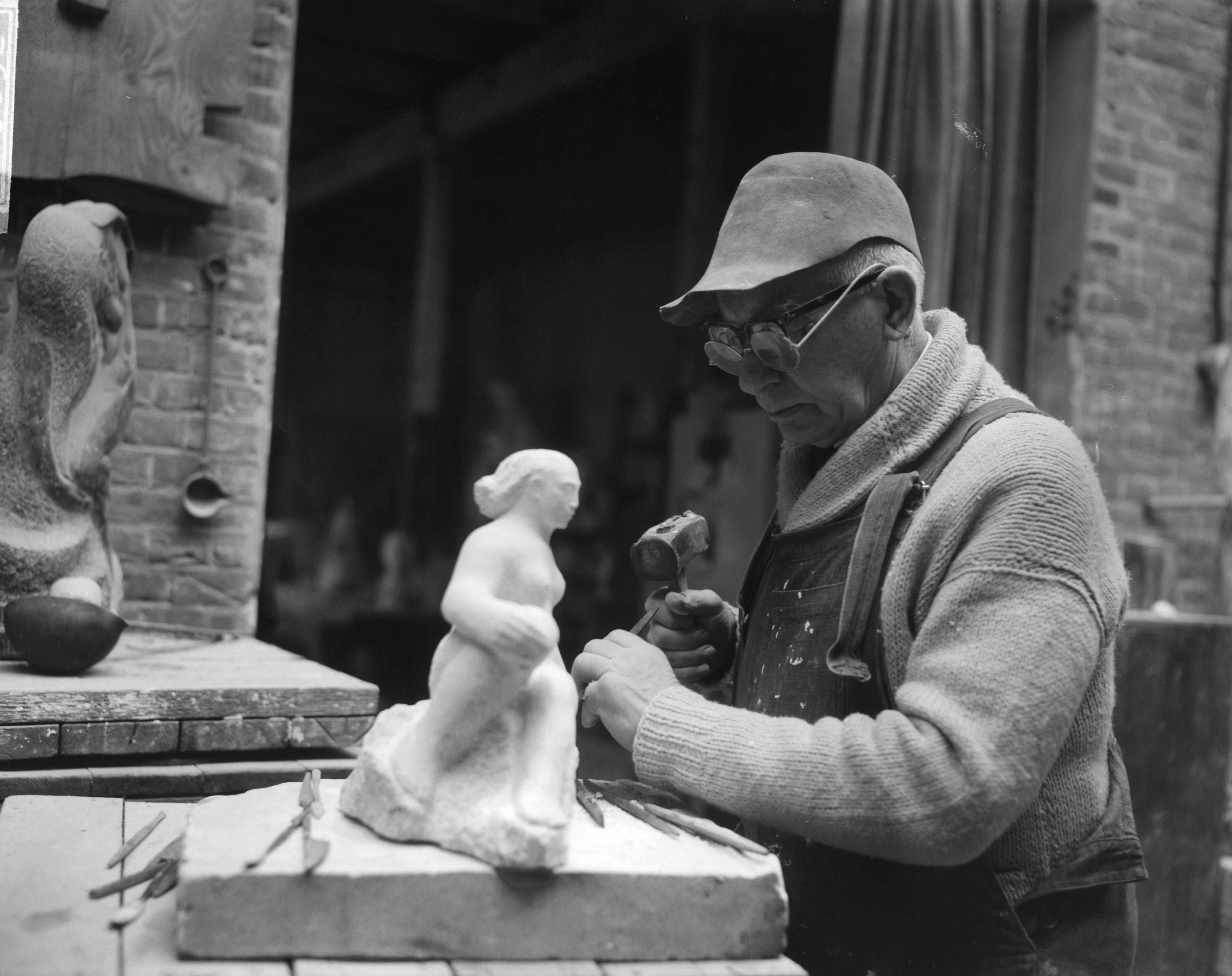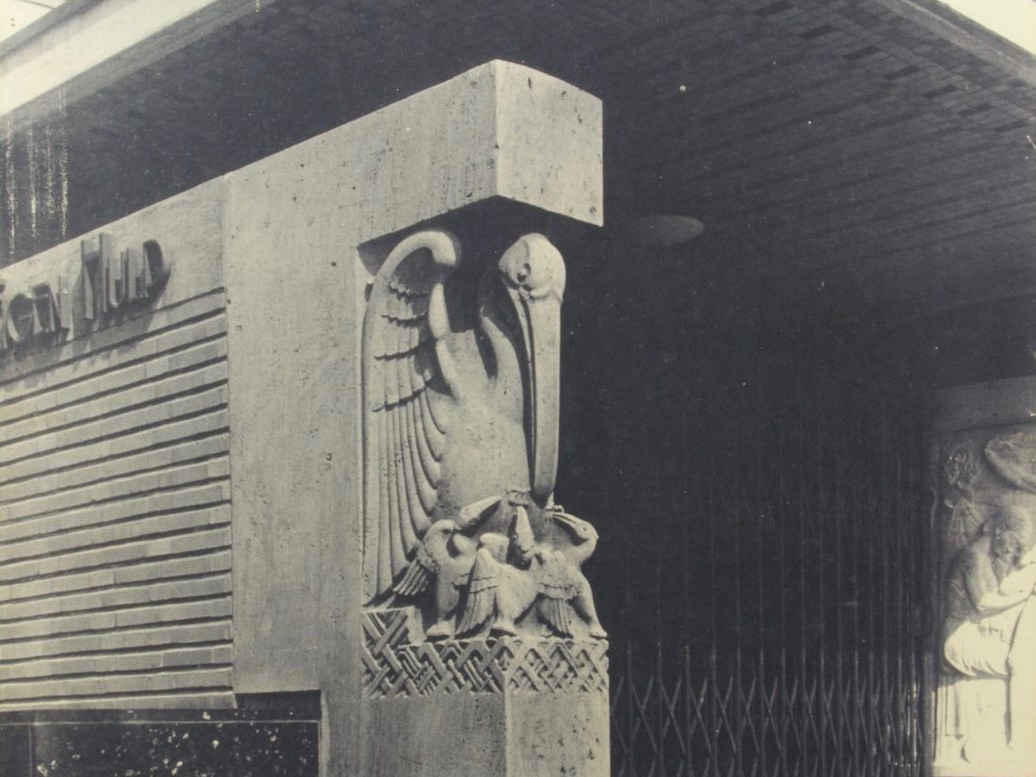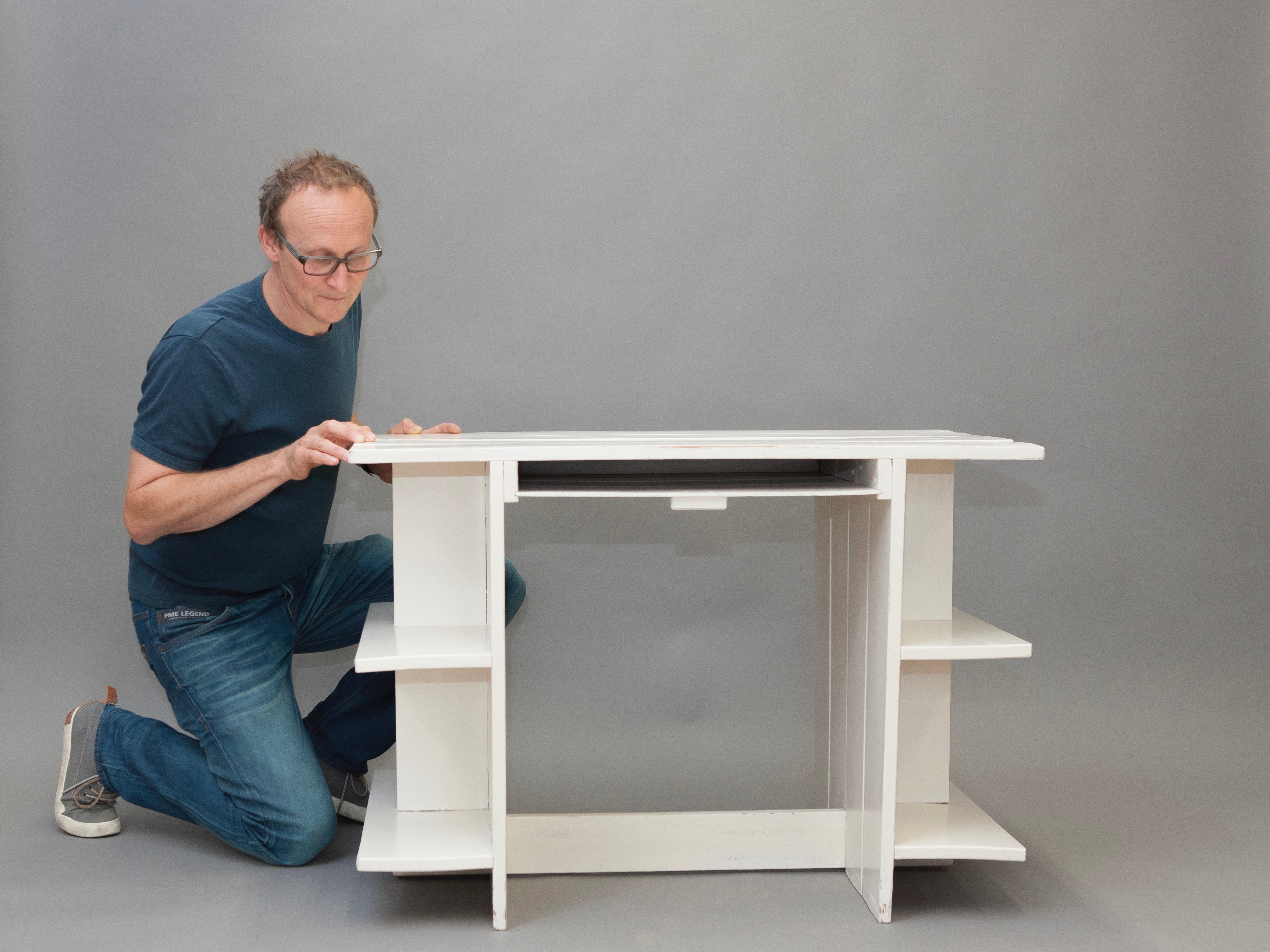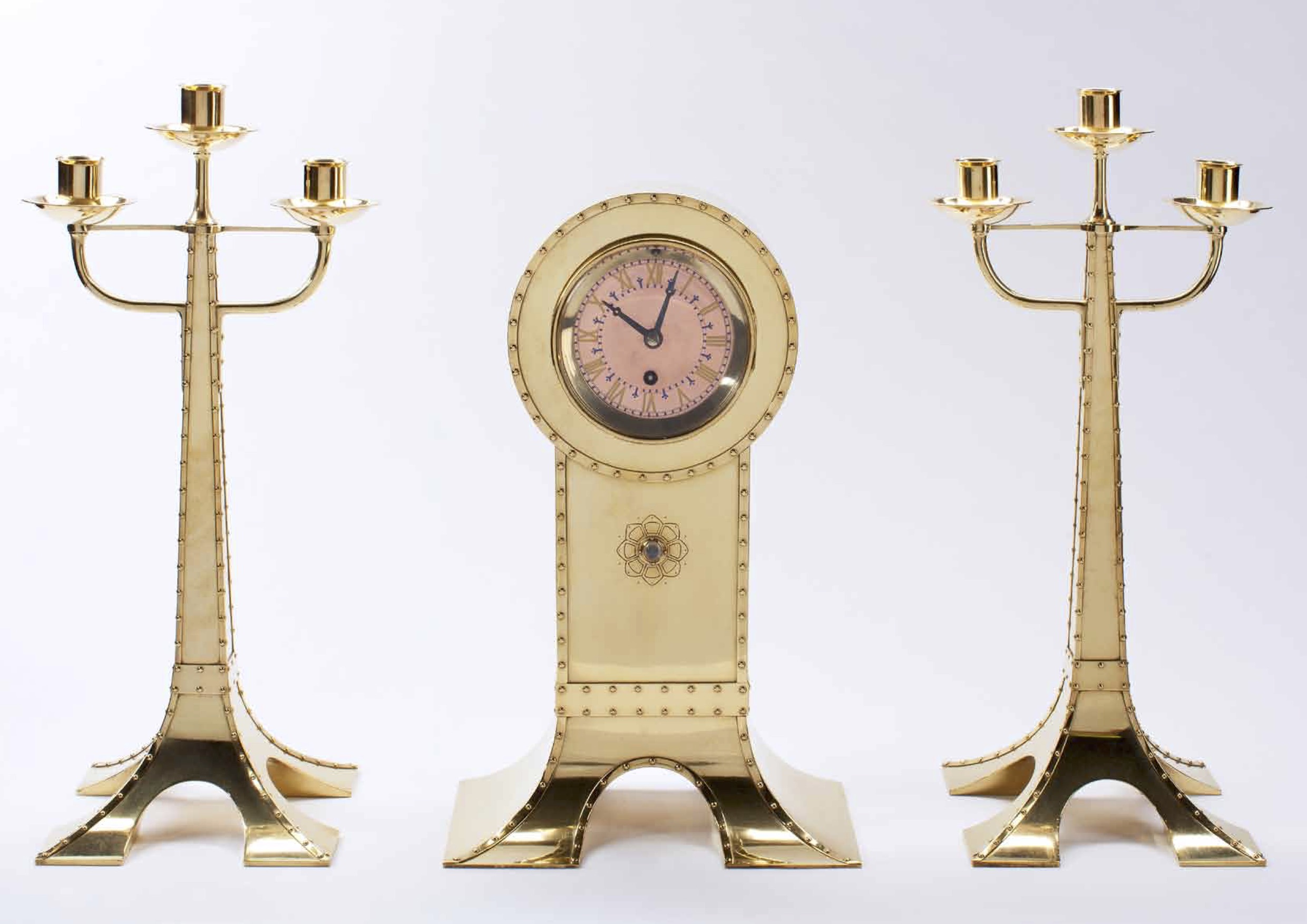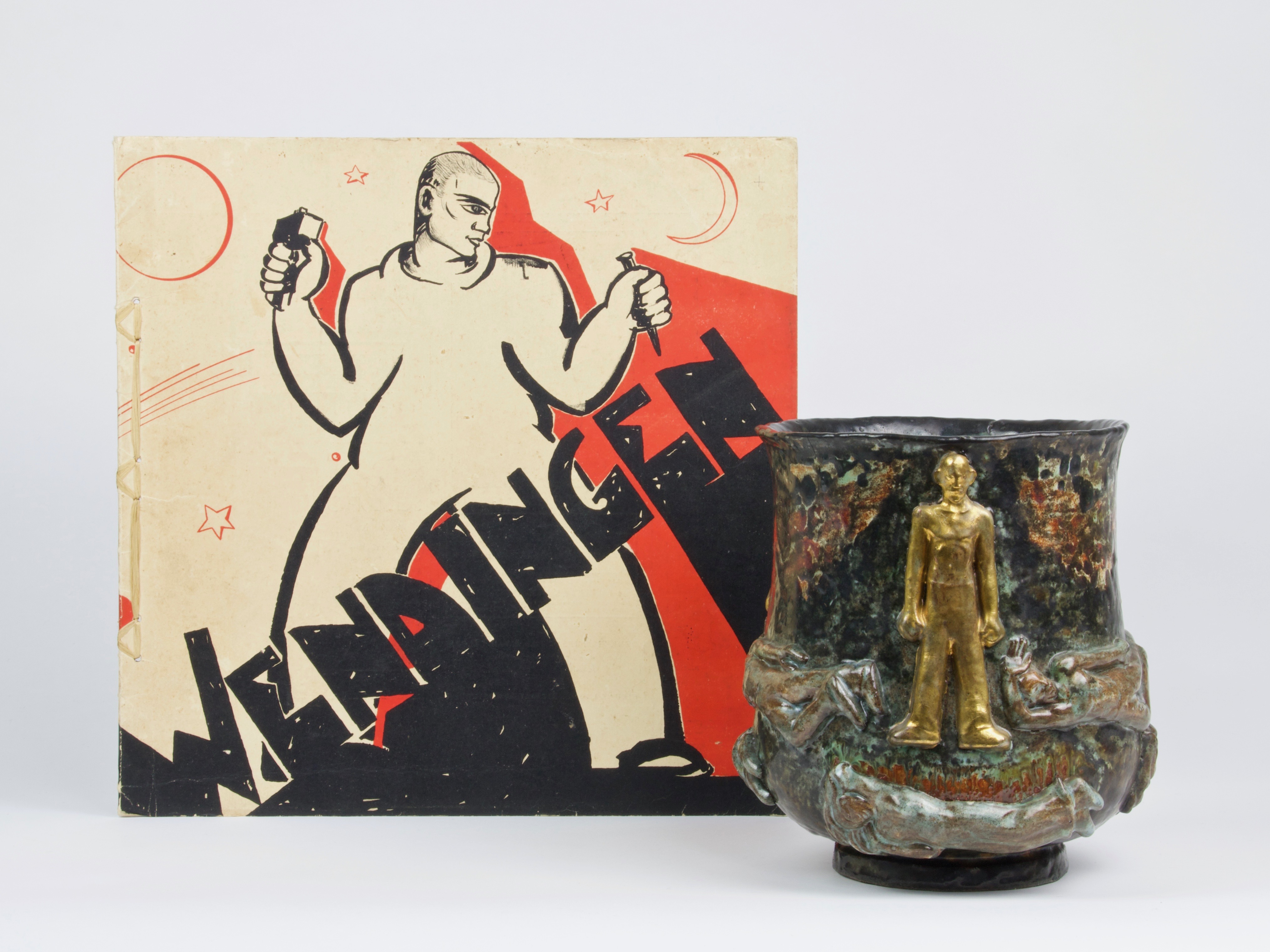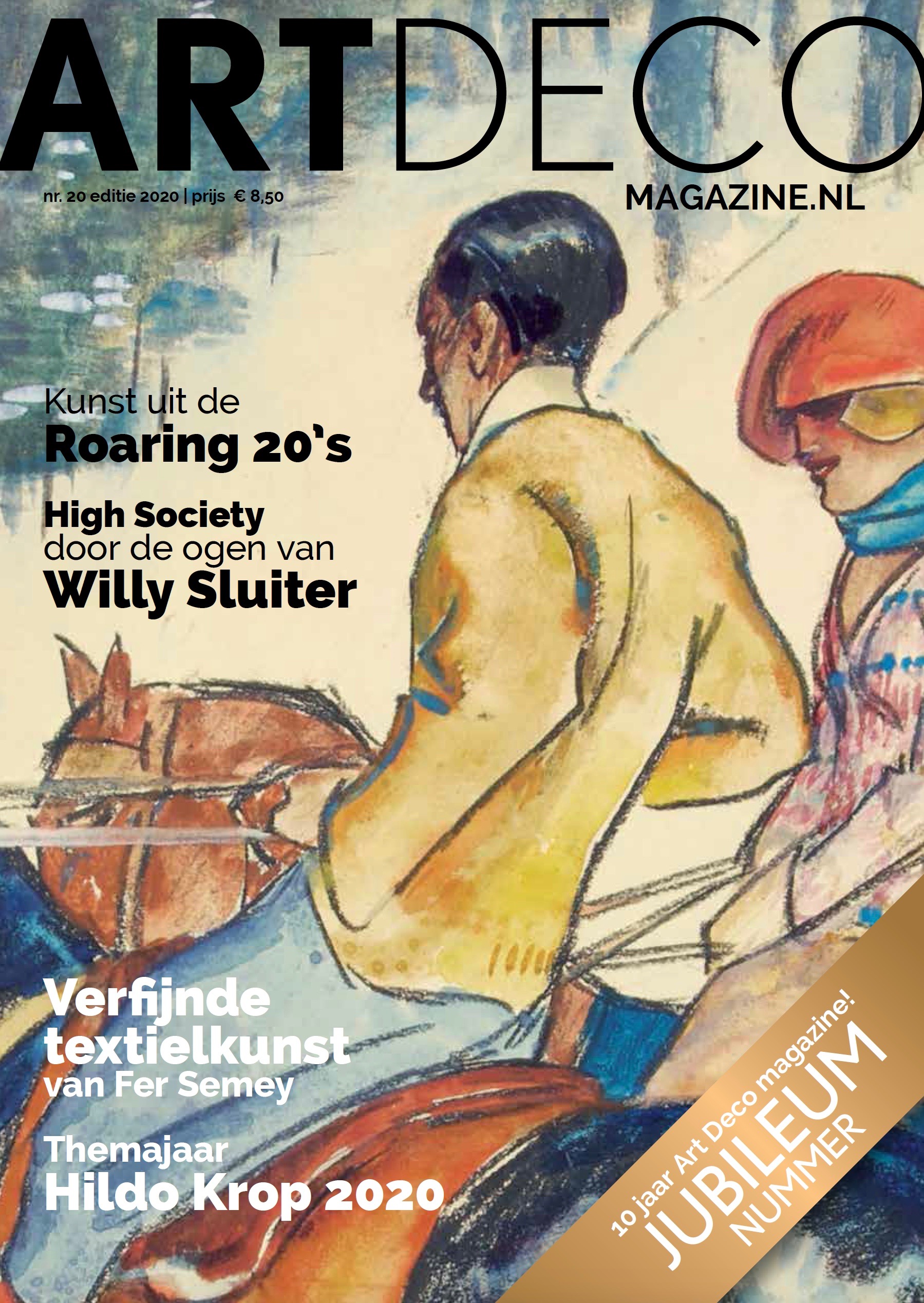Interior art by Hildo Krop
The Amsterdam city sculptor Hildo Krop is seen as one of the most versatile artists of the Amsterdam School. No wonder that Wendingen, the monthly magazine published by architect society Architectura et Amicitia from 1918 to 1931 as the mouthpiece of this movement, showed work by Krop on several occasions. In 1925 a whole issue was even devoted to sculptures by Krop, for which he designed the cover himself. But in addition to a sculptor, Krop was also a decorative and graphic artist. For example, several of his woodcuts were included in the woodcutter issue of 1919. His interior art can be seen in Wendingen as well, with a beautiful mahogany wall panel as the highlight. This wall panel is now part of the Kunstconsult collection.
Though originally trained as a pastry chef, Hildo Krop (Steenwijk, 1884 - Amsterdam, 1970) still decided to become an artist. He took drawing and painting lessons at Heatherly’s of Fine Art in London and Académie Julian in Paris and went on to study sculpture at the age of 24 at the Rijksacademie voor Beeldende Kunsten in Amsterdam. Nowadays we mainly know Krop from his sculptures on many facades and bridges in Amsterdam. One of his first important assignments was for the Scheepvaarthuis. Hendrik van den Eijnde was hired as the main sculptor and Krop could assist with the extensive decoration of the building. For this, he designed several facade sculptures. Here, he learned the use of a symbolic visual language that should be understandable for everyone. In the Scheepvaarthuis, sculpture formed a unity with architecture, entirely in accordance with the ideal of the Amsterdam School that was promoted by Architectura et Amicitia in Wendingen.
City sculptor
The Scheepvaarthuis was an example of ‘gemeenschapskunst’ (‘community art’), art as a result of a collaboration of different art disciplines and meant for everyone. Several artists, such as Joan van der Mey, Michel de Klerk and Piet Kramer, worked together on the interior and exterior of the building. As a result of his work for the Scheepvaarthuis, Krop started in 1916 at the Public Works Department. Krop recognized himself in the socialist policy of the municipality of Amsterdam, where it was possible to work according to the ideal of 'gemeenschapskunst’. Eventually he was appointed city sculptor in 1956, an honorary title awarded to him after working for forty years for the municipality of Amsterdam.
Interior art
In addition to his sculptures, Krop made furniture and interior art. For example, for the entrance to the council chamber in Amsterdam’s former town hall, he made a wooden panel with an openwork representation with Amsterdam symbols, including the Stedemaagd. In 1912 Krop had learned to carve wood in the Amsterdam furniture factory of Gieben. After this he (sometimes together with Willem Rädecker) made furniture in a plastic-expressionist version of the Amsterdam School, just like his friends De Klerk and Kramer. However, Krop's designs were less extravagant and colourful. His furniture was executed by furniture factories such as Nusink & Zn in oak, which was sometimes stained black. They were beautifully decorated with flowers, animals and human figures, which he cut into arm rests and panels. Especially for friends and family, Krop designed complete interiors consisting of furniture, clocks, rugs, lamps and other interior art. These were carried out in workshops such as Winkelman & van der Bijl and N.V. Van Wijngaarden & Zonen.
Wall panel in Wendingen
The interior art issue of Wendingen from 1927 shows photos of a beautiful mahogany wall panel in the interior of a study in a house at Oranje Nassaulaan 10 in Amsterdam, designed by architect Cornelis Jouke Blaauw (1885-1947). Commissioned by art and culture lovers August and Ada von Saher-Crone, Krop designed the paneling, furniture and carvings for the interiors of the salon, dining room and study in 1926. In these photos not only the wall panel is prominently visible, but also a unique coromandel sculpture of a lady (with details of a woman's face and hand). Later, when Ada and her second husband Jan Hondius moved to Villa Vijverhof in Bloemendaal, the interior of the study - including the wall panel and coromandel sculpture - and the dining room were relocated. Nowadays, parts of the interior are in museum collections, including the Rijksmuseum and Amsterdam Museum. The wall panel is is now part of the sales collection of Kunstconsult. The panel shows a mother and child in the center, surrounded by the working people and industry on the left and nature in the form of flying herons, eagles, a fox, a deer and a faun on the right.
Openwork representations
For jeweler Steltman in The Hague, a childhood friend, Krop set up the store on Noordeinde in ca. 1920. He installed coromandel window panels with a beautiful decoration of a faun with a fox, a woman with a snake and a pearl diver. This figurative representation was executed by Krop ‘ajour’, which means with openwork parts, in the wood. This was a technique Krop often used, both in the interior and in the exterior. Krop’s openwork tiles can still be seen at the facades of the former Tweede Handelsschool and the Comenius Lyceum (now the Berlage Lyceum) in the J.P. Takstraat in Amsterdam. As a result of their openwork parts, these tiles form a beautiful decoration on the southern facades of these school buildings of light-coloured stone. In the Kunstconsult collection there is a similar ajour tile of red-brown metallic stoneware with a representation of a fox, designed by Krop around 1921-1924. This form of architectural ceramics was executed by earthenware factory ESKAF (Eerste Steenwijker Kunst Aardewerk Fabriek).
Furniture from private property Hildo Krop
In a music cabinet (or bookcase) of blackened oak from around 1925, such openwork motifs have also been used. Krop used the furniture himself in his studio, where it was until his death. The cabinet has a drawer on the front and a shelf on the right. The all-around finished furniture can stand freely in the room. An heir acquired this cabinet from the artist’s private property. As a result, its existence was unknown until recently. Another piece of furniture from Krop's own studio is the richly decorated blanket chest that the artist made for his wife in 1948. On the lid of the chest is written in a graceful handwriting: "Hildo Krop dedicavit uxori carissimae AD 1948", meaning: "Dedicated by Hildo Krop to his beloved wife in 1948". The blanket chest is made from jati wood (very old teak from East Java). On the front and sides of the chest a text in capital letters is written on a bandarole: "De mens staat en valt | En helpt en richt zich op | Wat geloof de mens ook heeft verloren | De vrijheid eenmaal wordt geboren" ("Man stands and falls | And helps and gets up | Whatever faith man has lost | Once freedom is born"). This phrase, like the representations on the seven relief panels, refers to the liberation of 1945.
Ceramics for ESKAF
In addition to furniture, Krop made ceramics for the home. From 1919 he designed ceramics for ESKAF (Eerste Steenwijker Kunst Aardewerk Fabriek), the earthenware factory of which his father was co-founder and director. Between 1919 and 1934 ESKAF produced fascinating pieces designed by various artists. Krop made around sixty designs for decorative and utilitarian pottery, as well as tiles and building ornaments. Around 1920 he designed a sculpture of a Maenad. This Maenad from Greek mythology is a female nymph - in this case with goat’s legs and tail - who accompanies and honours Dionysos, the god of wine. The animal and plant motifs in his work, but also the mythical animals, fauns, the Greek god Pan and mythological figures such as this Maenad almost always have a symbolic meaning. For example, the faun stands for the unconscious, unspoiled nature. Many of these figures can be found in the epic poem “Pan”, written by Herman Gorter in 1912, which was very popular in socialist circles.
Gold medal in Paris
Several ESKAF designs by Krop were awarded a gold medal at the Exposition Internationale des Arts Décoratifs et Industriels Modernes in Paris in 1925. The Dutch pavilion, designed by J.F. Staal, was entirely built and decorated in the style of the Amsterdam School. The pavilion was a collaborative project by various Amsterdam School artists, such as Lambertus Zijl, John Rädecker and Joseph Mendes da Costa. Krop also contributed to the decoration of the building. He designed sculptures for the exterior, but also a rug for the interior. Possibly the beam-ends from the Kunstconsult collection, which are also heirlooms from the Krop studio, were incorporated in this pavilion. The two polychrome wooden consoles show different carved figures, including a squirrel and a bird, painted in gold, red and blue. It is known that similar beam-ends by Krop have been used in the Dutch pavilion.
Ceramics from his own workshop
Krop continued to make ceramics, later also in his own studio. In between major assignments he started experimenting in 1925 with making small ceramic sculptures, which he baked in his pot stove. From 1927 he owned a coal-fired enamel oven, of which he was able to slowly increase the temperature. He made cheerful, sensitive and humorous ceramic pieces of people, masks, fauns and animals. Some small sculptures were used as models for larger sculptures and bronze sculptures. After the Second World War, Krop continued to experiment with glazes and motifs. He also purchased a larger gas oven, enabling him to bake larger-sized ceramics. His ceramics grew into an important addition to his large, monumental sculptures.
Unique urn
After the war, Krop also made several commemorative statues. In the collection of Kunstconsult there is a unique urn with a representation of standing and lying men in relief. He made the urn in 1948 from glazed polychrome ceramic, partly covered with gold. This urn was probably intended for the wall behind the National Monument on Dam Square in Amsterdam. Eleven urns filled with earth were placed in this curved memorial wall. This earth came from fusillade and honorary burial sites from the then eleven provinces of The Netherlands and from the former Dutch East Indies. Eventually, Krop’s urn was not placed in this wall, because Krop did not agree with the fact that also earth from Indonesia was incorporated. The figures on the urn show great affinity with the representations that Krop incorporated into the aforementioned blanket chest from the same year.
The hand of the sculptor
Krop worked for the municipality of Amsterdam until his death in 1970. He died working in his studio at the age of 86. As a very versatile and productive artist, he left behind a large oeuvre, both in public and private space. Hildo Krop is best known as a sculptor. But also in his other work - his wood carvings, furniture and ceramics - the hand of the sculptor is clearly visible.
Text: Noortje Remmerswaal
Photos: Noortje Remmerswaal, Dennis A-Tjak and Joop van Bilsen / Anefo, Nationaal Archief via Wikimedia Commons
© Kunstconsult – 20th century art | objects
Reproduction and distribution of this text is only allowed with correct reference.
